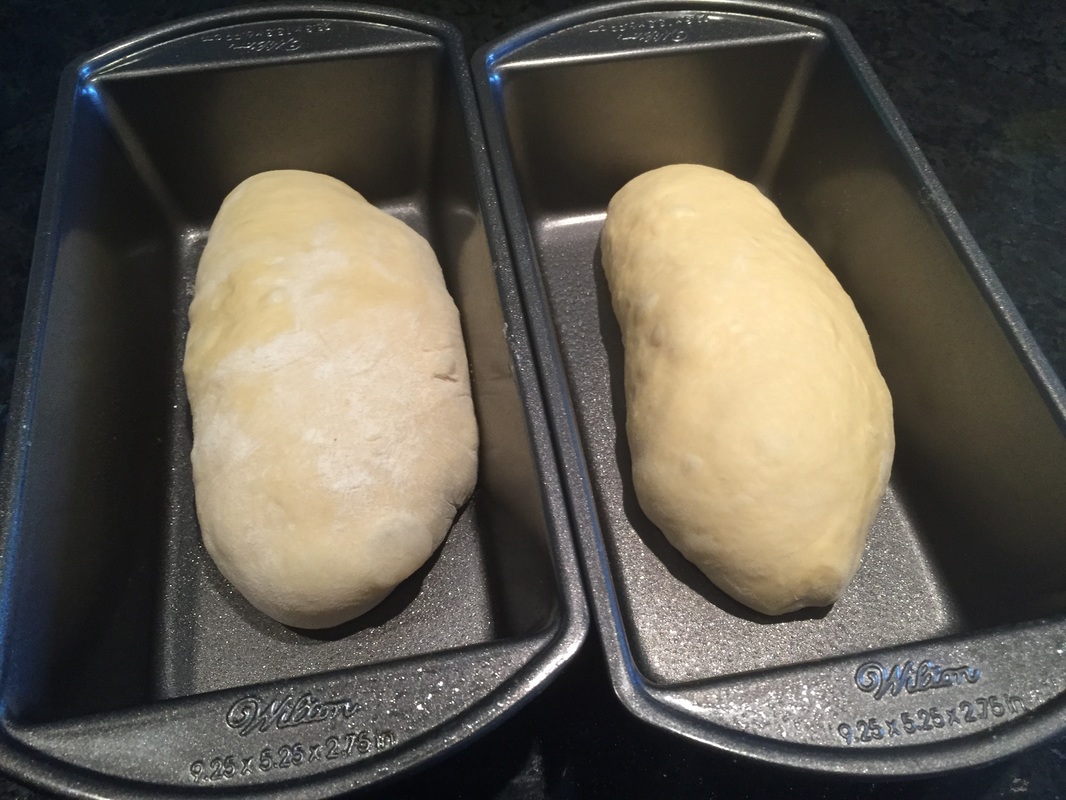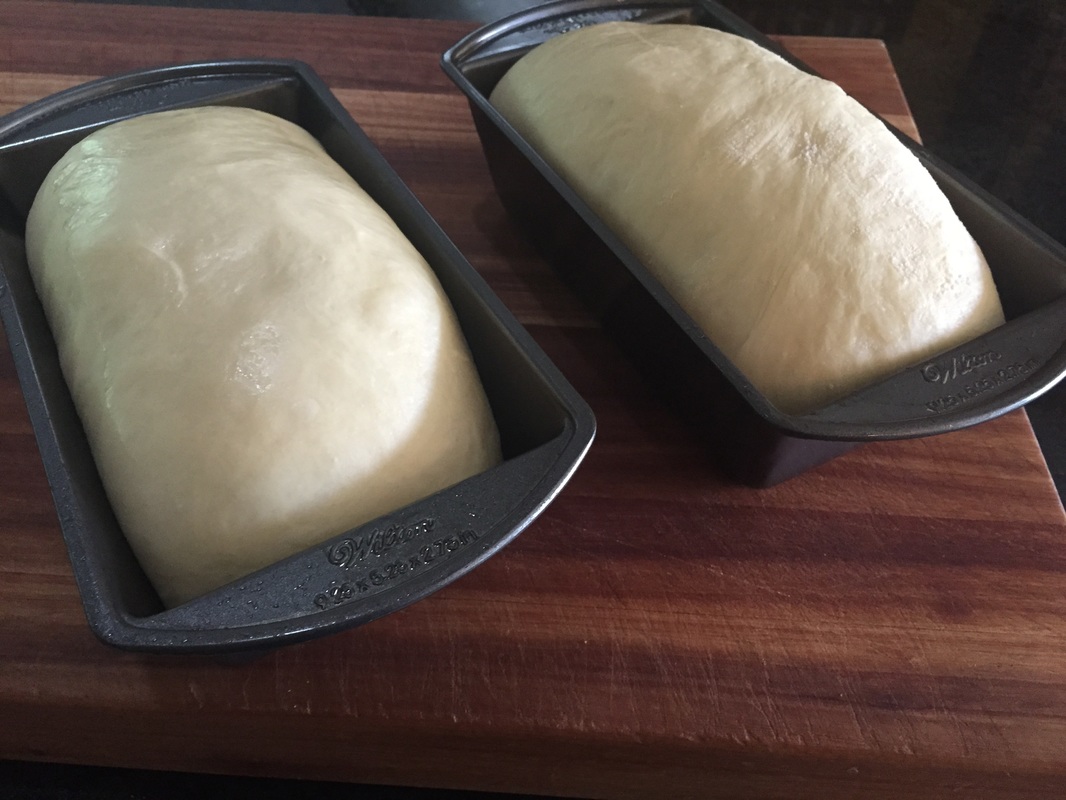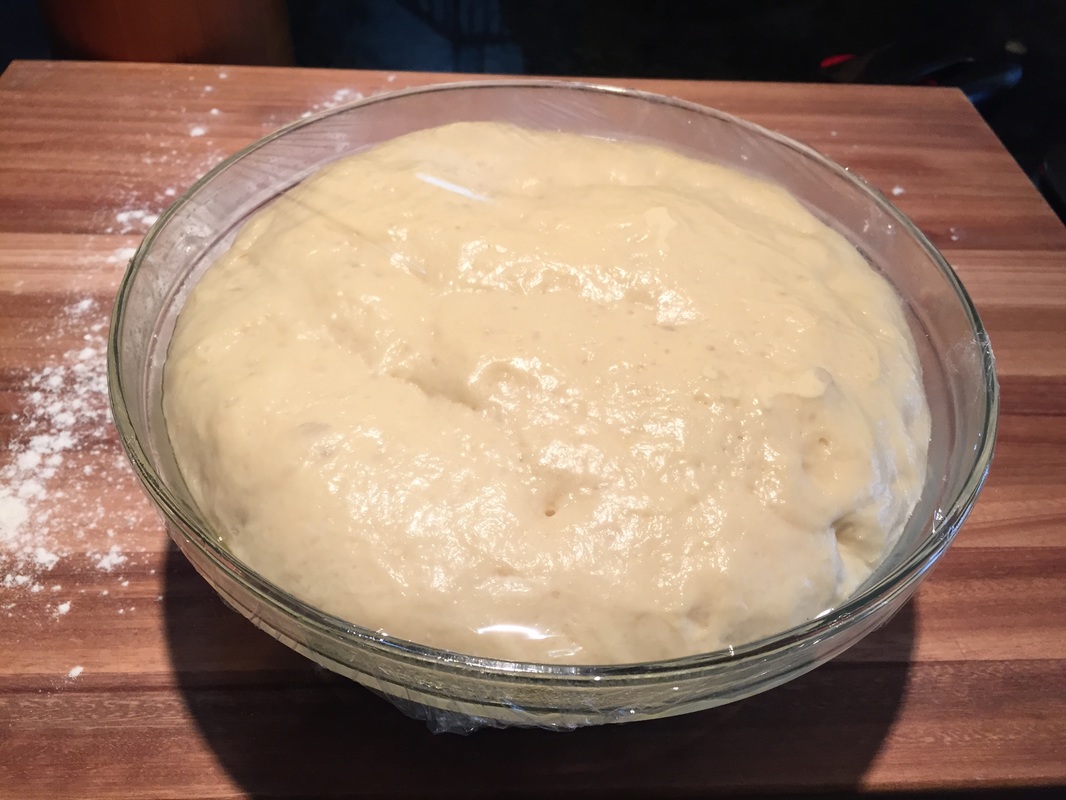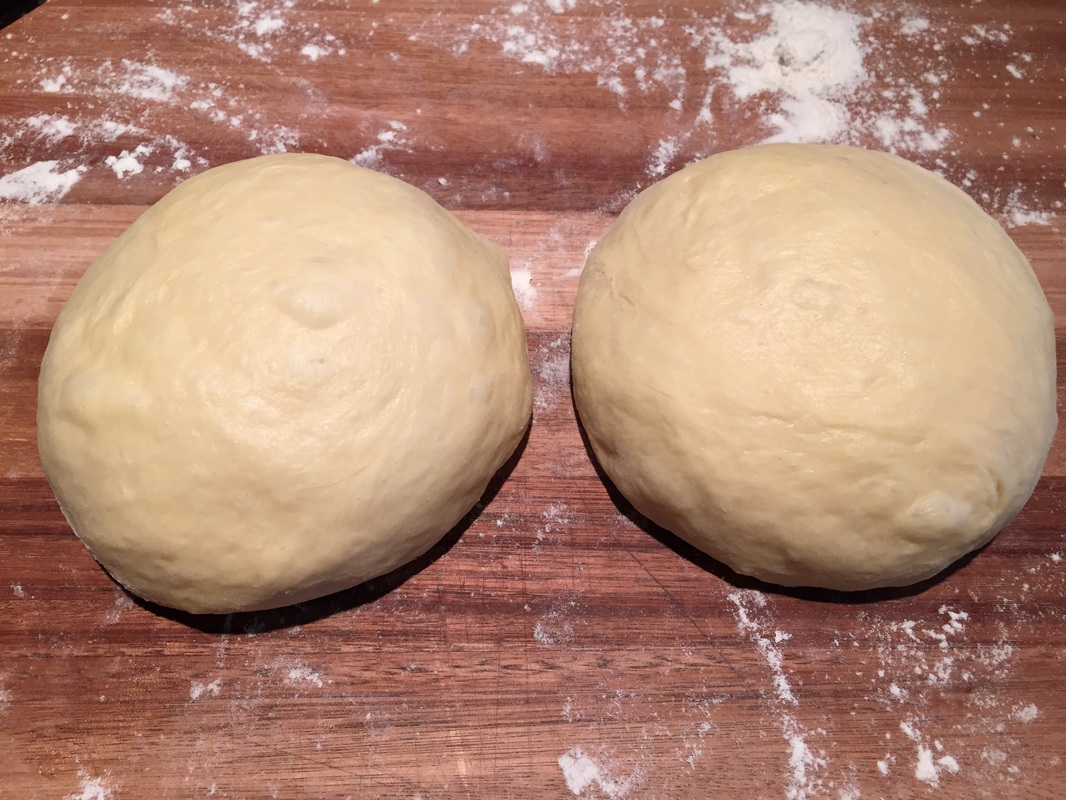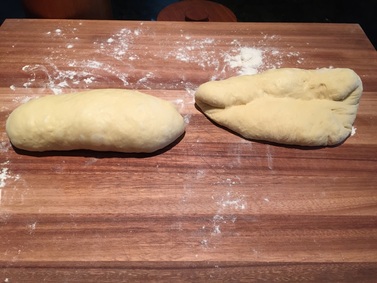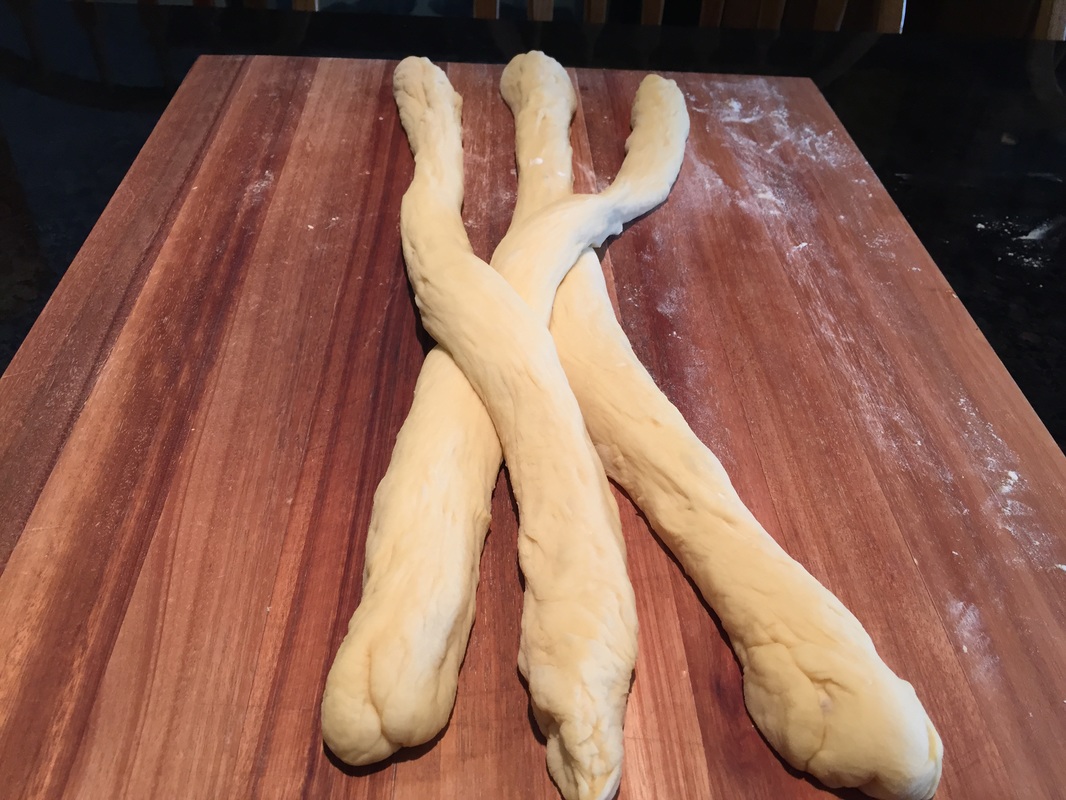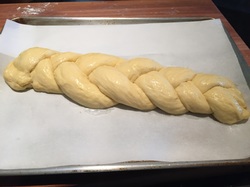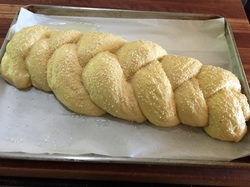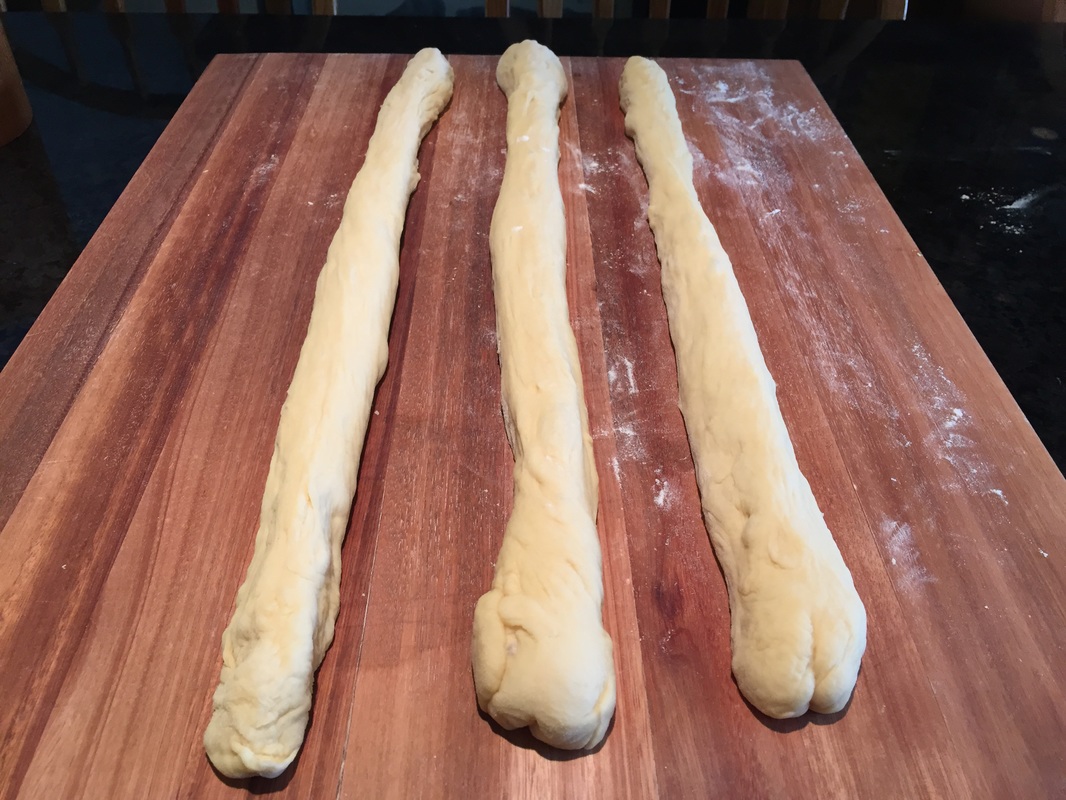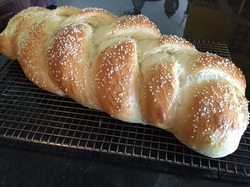|
Grandpa Joe's
Challah Challah is a classic Jewish celebratory bread. |
|
About this recipe
Although I have made minor modifications, I must give full credit for this superb Challah recipe to Peter Reinhart who published it in his 2001 book "The Bread Baker's Apprentice" (pages 133 and 134). I often bake Challah in loaf pans (as pictured here), but it is traditionally baked as a braided loaf (See Braiding Directions below).
Ingredients
Directions - Loaf Style
|
Dough fully risen and ready for shaping (Step 5).
Two tightly rolled balls (Step 6).
One "torpedo" and one (on the right) partially formed (Step 7).
Challah baked loaf style.
|
Directions - Traditional Braid
Notes
|
Ready for braiding (Step 3).
First step: place the far right strand over the middle strand (Step 4).
Traditional braided Challah.
|
Posted: September 2015.
